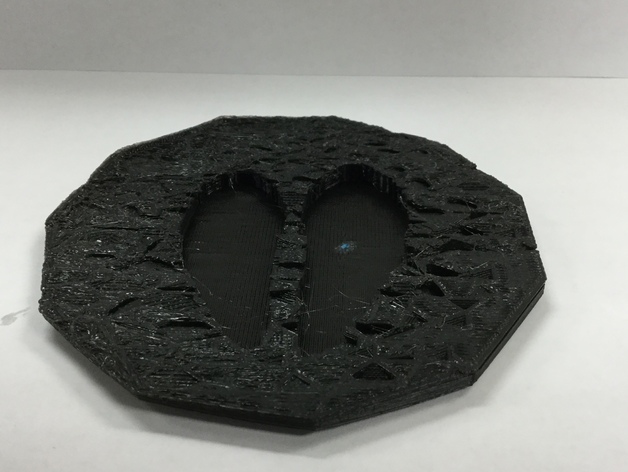
Identifying Animals by Tracks and Scat
thingiverse
Human: 3D Printed tracks and scat are used to identify animals found in the wild. Often students can't be taken outside to track animals, so the animal tracks can be printed and brought inside. Print Settings Printer Brand: MakerBot Printer: MakerBot Replicator (5th Generation) Rafts: Yes Supports: No Resolution: 0.2mm Infill: 10% Notes: Rafts are probably not needed, but I use them anyway. How I Designed This The tracks were made using a life-size drawing of a deer print. I then converted the 2D picture into an .svg file and uploaded it into Tinkercad. I used the .svg as a hole in a base that I made to mimic a print. The scat was made by creating a few different shapes in Sculptris and then printing out a number of each design. Our school teaches a forestry class. Students study the animals found in local forests. When they get to the orienteering section of the course, they will be asked to find evidence of wildlife near the school. If they can't leave the school or if there's no evidence to be found in our area, then creating artificial evidence is a good way to introduce students to wildlife they may encounter. Objectives Students will gain an understanding of how to recognize wildlife in their surroundings by studying the evidence left behind. Skills Students will: Use various methods to observe, collect, document, classify, and summarize data on animal tracks. Use a field guide and related references to identify and interpret wildlife tracks. Recognize animals that live in the local community. Analyze data to construct a reasonable explanation for a wild animal's behavior, traits, and needs. Lesson Plan and Activity Option 1: Students are given information about finding animal tracks in the wild and use that information to create a 3D model of the animal tracks for a class library of tracks. This can be done by sketching and scanning a life-size print or finding a simple print online and converting it to an .svg file. Then, use a program like Tinkercad to create the print. The .svg file would be imported and used as a hole in a thin solid base. The scat is more of a freeform design, so the Sculptris software would be a better choice for that. Option 2: Instructor designs and prints tracks and scat ahead of time and has a classroom gallery of wildlife evidence. Students are given an animal track guide and asked to identify the animal that would have created the track. Then, they will match the animal track with the scat that would be left behind by that animal. If possible, students can be taken outside to search for clues of animal activity around the school. The printed tracks would be kept as a class library for reference. Once students know what they're looking for, they can follow the lesson located here: https://nationalzoo.si.edu/education/classroomscience/animaltracks/teacher/default.cfm to bait areas around the school and see what sort of wildlife is attracted to your area. The formative assessment would be the completed worksheets. Materials Needed Copies of student worksheets (found in "files") Duration of Lesson 90-minute class Preparation One option for this lesson is to have students learn about animal tracks and scat by designing the printed tracks. If the students won't be doing this, then the instructor will need to have as many different local animal tracks and scat samples as possible for the students to use as a guide. References https://nationalzoo.si.edu/education/classroomscience/animaltracks/teacher/default.cfm http://www.oyccweb.com/uploads/2/6/4/4/26442920/animal_track_id_guide.pdf
With this file you will be able to print Identifying Animals by Tracks and Scat with your 3D printer. Click on the button and save the file on your computer to work, edit or customize your design. You can also find more 3D designs for printers on Identifying Animals by Tracks and Scat.
